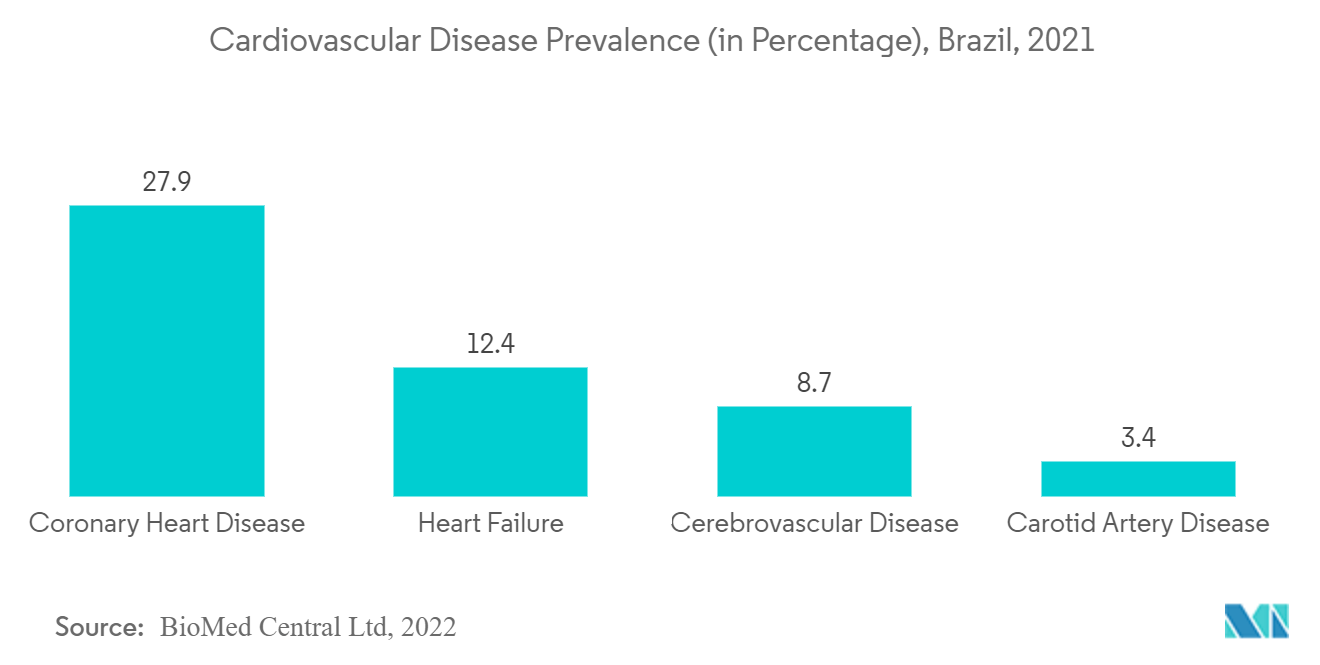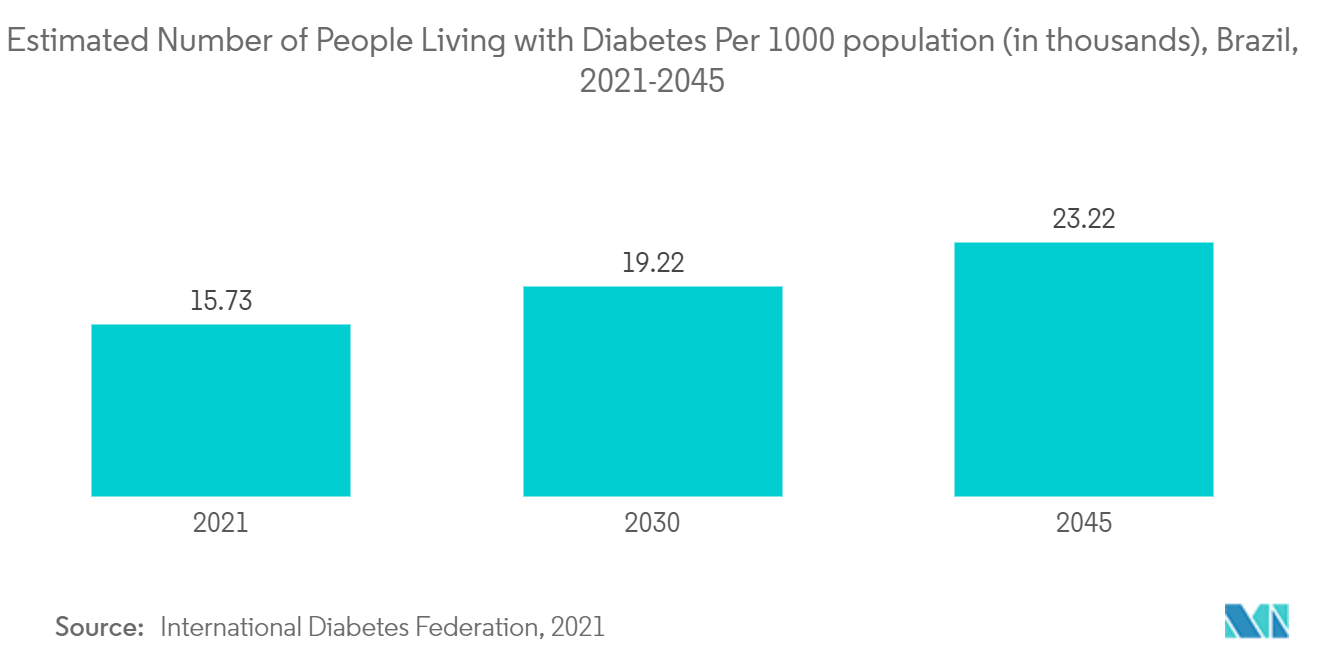Market Trends of South America Hemodynamic Monitoring Industry
Non-Invasive Monitoring Systems Segment is Expected to Hold Significant Market Share Over the Forecast Period
Non-invasive monitoring systems include a standard five-lead electrocardiogram, non-invasive BP measurement, pulse oximetry, capnography, and nasopharyngeal and bladder temperature. Factors such as an increasing number of geriatric populations, along with a growing number of heart diseases are anticipated to stimulate the demand for non-invasive monitoring systems. For instance, according to a study published in European Heart Journal in August 2022, the incidence of CVD (per 1000 person-years) varied between countries, with Brazil having the highest incidence (3.86) and Argentina having the lowest (3.07). Mortality rates (per 1000 person-years) varied more between countries, with Argentina having the highest (5.98) and Chile having the lowest (4.07). Men had a higher CVD incidence (4.48 vs. 2.60 per 1000 person-years) and mortality rate (6.33 vs. 3.96 per 1000 person-years) than women. This is likely to increase the demand for non-invasive monitoring devices, thereby boosting the market growth.
Furthermore, the increase in the regulatory framework and availability of non-invasive monitoring systems in Brazil is expected to drive segmental growth. For instance, according to an article published by the Journal of Hyman Hypertension in July 2022, Brazil confirms the need for a robust regulatory framework to increase the availability of validated automated blood pressure measuring devices and a comprehensive strategic approach that involves relevant stakeholders, includes a multi-pronged approach and is associated with a national program to prevent and control non communicable diseases.
Thus, all aforementioned factors are expected to boost segment growth over the forecast period.

Brazil is Expected to Dominate the South America Hemodynamic Monitoring Market Over the Forecast Period
Brazil contributes to the maximum share of the market due to factors such as the rising cases of cardiovascular diseases and associated risk factors such as diabetes, and hypertension. For instance, according to a report in May 2022 published by the Ministry of Health Brazil, the number of adults with a medical diagnosis of hypertension increased by 3.7% in 15 years in Brazil, and the rate went to 26.3% in 2021 from 2016. Thus, with a high prevalence of associated risk factors of CVD such as hypertension, the demand for hemodynamic monitors increases, thereby driving market growth in Brazil.
Furthermore, as per the data published in PLOS Journal in September 2021, cardiovascular diseases represent a significant public health problem, as they are the leading cause of disability affecting adults of full working age, accounting for about 27.7% of deaths in Brazil. Similarly, as per the report published by the World Bank in April 2023, diabetes prevalence among the Brazilian population aged 20 years to 79 years of age was 8.8% in 2021. With the high prevalence of diabetes, the chances of cardiovascular disease increase, thereby increasing the demand for hemodynamic monitoring.
Therefore, due to the abovementioned factors, the market is anticipated to witness considerable growth over the forecast period.

